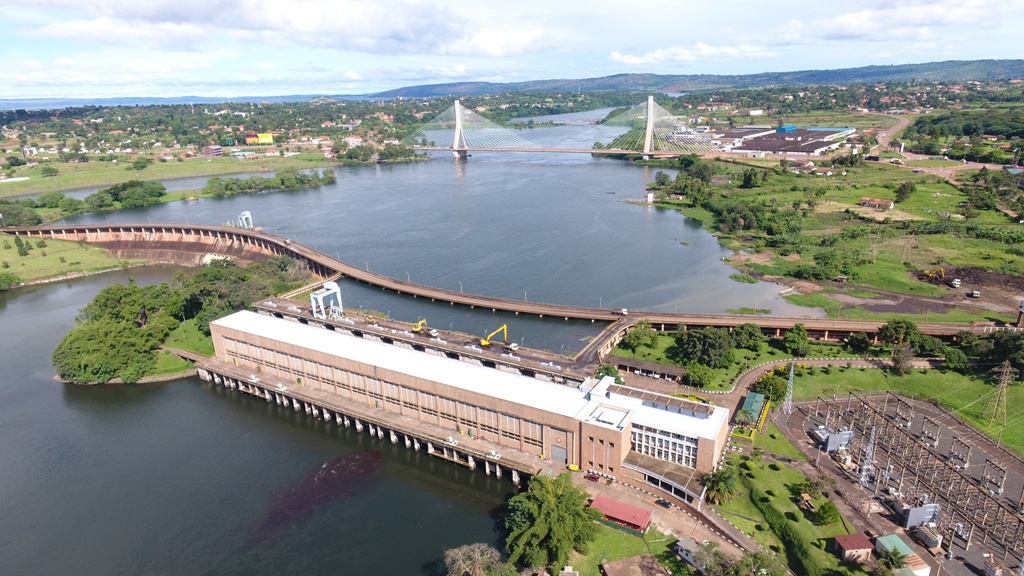Owen Falls Dam Jinja Uganda
Owen Falls Dam Jinja Uganda, In 1947, Sir Charles Redvers Westlake, an English engineer, advised the Colonial government of Uganda on the construction of a dam at Owen Falls near Jinja, resulting in the formation of the Uganda Electricity Board.
The Owen Falls was a waterfall located on the White Nile in Uganda, near the town of Jinja. The falls, along with the adjacent Ripon Falls, were inundated in 1954 upon the building of the Nalubale Hydroelectric Power Station. The dam containing the power station was initially designated as Owen Falls Dam, but was subsequently renamed Nalubale Dam, and the power plant’s name was altered from Owen Falls Power Station to Nalubale Power plant.

The waterfalls were situated roughly 4 kilometers downstream to the north of the point where the River exits Lake Victoria. This is the site of Nalubale Dam, formerly known as Owen Falls Dam. The geographical coordinates of the former Owen Falls are: 00°26’37.0″N, 33°11’05.0″E (Latitude: 0.443611; Longitude: 33.184722).
The original Owen Falls Power Station comprised a concrete gravity dam and an integrated intake powerhouse unit. The dam regulates the discharges of Lake Victoria with ten turbines and six sluices. The six sluices, when completely opened, offer a spill capacity of about 1,200 cubic meters per second.
Upon its commissioning by Queen Elizabeth II in 1954, the power station comprised two units, each with a capacity of 15 megawatts, totaling 30 megawatts of generation capability. The table below demonstrates the incremental growth in generation capacity until all ten units became operational in 1968. In that year, the power station’s generation capacity attained 150 megawatts.
Per the accords established between the Colonial British government and the Egyptian government in 1929, subsequently amended in 1949, the power station operates in accordance with the Agreed Curve, ensuring that the outflow from Lake Victoria remains consistent with its pre-dam levels, which were naturally regulated by the rocky obstruction of Ripon Falls.
From 1971 to 1986, mismanagement and insufficient maintenance caused the generation capacity at Owen Falls Dam to decline to 60 megawatts by 1986. This necessitated repairs and rehabilitation, including the enhancement of each turbine’s capacity from 15 megawatts to 18 megawatts, to satisfy demand. In 1996, the power station achieved a generation capacity of 180 megawatts.
Acres International, now a subsidiary of Hatch Limited of Canada, conducted a study in the late 1980s on the feasibility of augmenting the power producing capacity of the Nile River at this site. The new project is a secondary powerhouse situated approximately 1 kilometer northeast of the Nalubale Power Station. A new canal was excavated to convey water from Lake Victoria to the newly constructed powerhouse. Significant development was finalized in 1999. The initial power from two of the five installed units became operational in 2000. The fifth and final turbine was installed in 2007. Every turbine possesses a capability of 40 megawatts. The newly established generating facility is designated as Kiira Hydroelectric generating Station.
